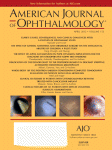In questo studio si è valutato l’impatto prognostico del ritardato trattamento con iniezioni intravitreali della maculopatia essudativa al suo esordio.
Si è verificato che il tempo trascorso dalla comparsa dei sintomi alla prima iniezione influenza la prognosi e la possibilità di conservare l’acuità visiva, indipendentemente da sesso, età e acuità visiva di base.
Ritardare la prima iniezione di più di 21 settimane aumenta di 2.6 volte il rischio di cattivi esiti visivi rispetto a un ritardo inferiore di 7 settimane o meno.
Lo studio conferma che l’efficacia delle terapie intravitreali è legata alla precocità della diagnosi e alla tempestività dell’intervento.
Jonathan H. Lim Sanjeewa S. Wickremasinghe Jing Xie, Devinder S. Chauhan, Paul N. Baird, Luba D. Robman, Gregory Hageman, Robyn H. Guymer
American Journal of Ophthalmology
April 2012, Volume 153, Issue 4, p587-786
Purpose To investigate the potential influences that affect visual acuity (VA) outcome in a clinic-based cohort of age-related macular degeneration (AMD) patients undergoing anti–vascular endothelial growth factor (anti-VEGF) treatment for choroidal neovascularization.
Design Prospective interventional case series.
Methods Patients with subfoveal choroidal neovascularization (CNV) secondary to AMD were prospectively recruited. A detailed questionnaire was given to patients at time of enrollment, to collect information relating to demographics, history of visual symptoms, visual acuity (VA), and treatment scheduling. Delay from symptoms to treatment (“Treatment delay”) was measured in terms of weeks and analyzed in tertiles. Information pertaining to treatment outcomes was collected over a 6-month period.
Results One hundred eighty-five eyes of 185 patients were recruited into the study. Longer delay from first symptoms suggestive of CNV to first injection was a significant predictor (P = .015) of poorer treatment outcome, when controlling for age, sex, and baseline VA. Patients with a delay in treatment of 21 weeks or more compared to a delay of 7 weeks or less had an odds ratio of 2.62 (1.20, 5.68) for worsening vision after treatment.
Conclusions Patients experiencing a longer delay between their first symptoms of CNV and their first anti-VEGF treatment have a significantly lower chance of improving vision at 6 months following anti-VEGF therapy. It is critical that this information reach those at potential vision loss from AMD, in order that prompt treatment may be instituted, to maximize the benefits of anti-VEGF treatment.DesignDesignstrong

